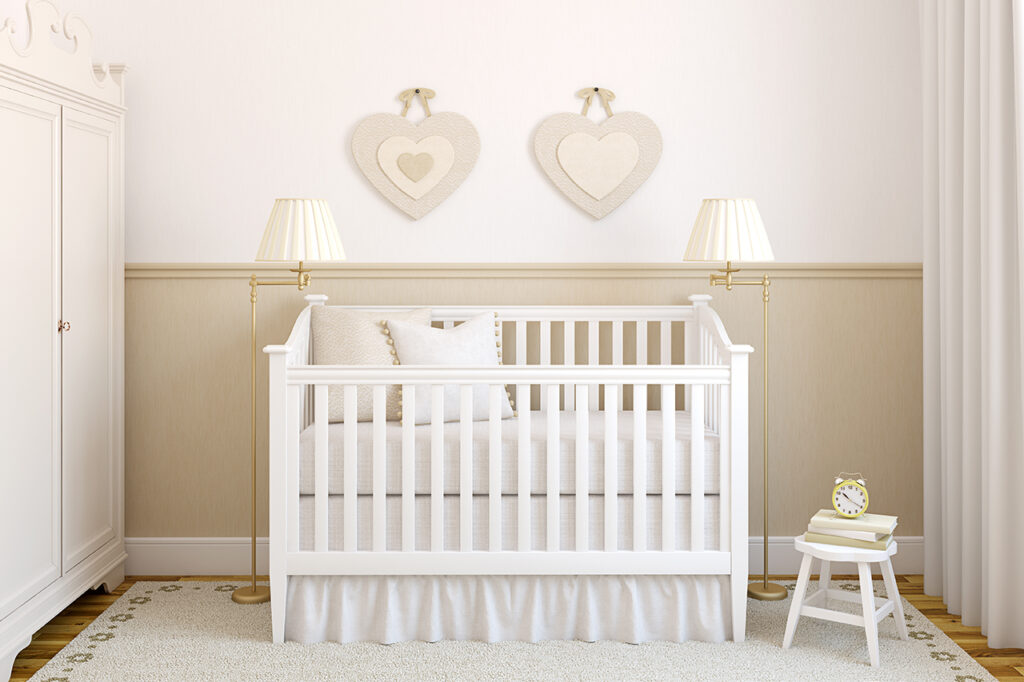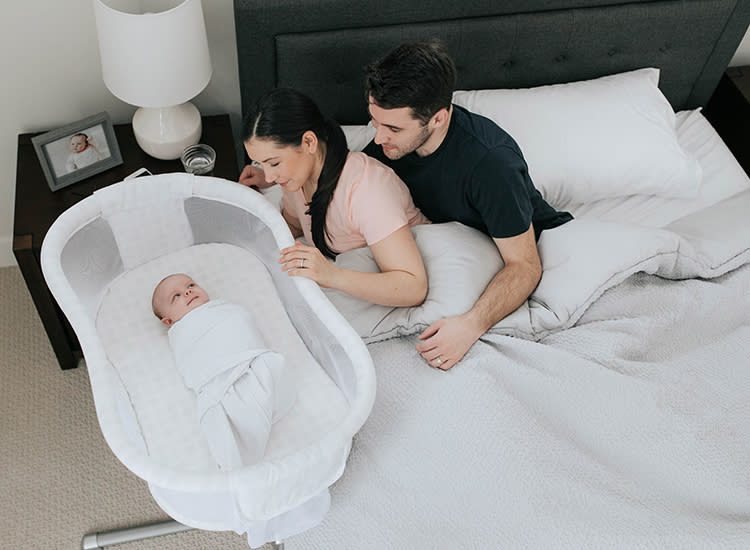If you think you have excelled in the art of parenting and successfully survived through the postnatal period, then wait, the fun never ends! There are still some challenges you have to face. You will find a need to learn a bit more about the little one, especially when the baby has started rolling over the bassinet. Seeing the baby’s feet and head bumping into the sides of the bassinet has left just a dangling question on the minds of many parents how to transition from bassinet to crib?
A Baby’s sleep and parents’ comfort are inextricably linked. So, much emphasis is made on the safe sleep of babies. As parents, we expect you to be aware of the American Academy of Paediatrics’s safe sleep guidelines.

It is recommended that a baby should sleep in the parent’s room for at least the first six months to one year. As your baby hits this time period, then it is time to consider the transition. We have shared some tips regarding this transition that would let you know how to transfer a baby to the crib.
You may also read: Bassinet vs Crib
Tips for moving baby into own room
This write-up is loaded with tips for moving the baby into its room. You might want to hold to a cup of coffee as you ride through the different aspects of this article to know about this transition process. So let’s start with these effortless tricks.

1. Provide a safe sleep area
Remove all unnecessary clothes and toys from the crib
Place a firm mattress with tightly fitted sheets
2. Optimal sleep environment
Make the room pitch black that stimulates peaceful sleep
Remove extra clothing as they can increase body temperature
3. Make him familiar with his room
Visit the nursery with him to get him familiar with the smell and sight of the room
Let him play in his nursery and also nurse him in the nursery
4. Make transition in steps
For the first few days, place him in the crib for daytime naps. When he became familiar with the crib, then let him sleep in it at night also. But make sure to place the crib next to your bed, which would help the baby sleep comfortably.
Some people took the opposite tack and put the baby in the crib for nighttime sleep. This is also an alternative step that works for most babies.
Hopefully, these simple tips would help you, especially if you are a nursing mother, and ponder how to transition baby from co-soling to crib.
Now, it’s time to know when to transfer the baby to the crib.
When to transition baby to a crib in own room
Ideally, the transition to crib at five months or six months is normal. Once your baby has reached the age limit of the bassinet which is six months most of the time, it is the best time to transfer a baby to the crib.
After the transition from bassinet to crib, bridge the rooms with white noise, a baby monitor, and nightlights. The use of a video monitor is another valuable tool to keep tabs on him. Plus, it eases the fear of moms of leaving the baby alone.

If your baby is too big for a bassinet but not ready for a crib, it tends the mothers to ponder whether it is safe to move the baby to a crib at 2 months.
Moving baby to crib at 2 months
Chunky babies look adorable, but they grow out of the bassinet before the recommended age. For instance, if your baby is super big and reached the 100th percentile of the length at 2 months of age, then it is time to move him to the crib. So, moving the baby to a crib at 2 months is not normal as they are not planning on moving the baby this early at all.
Factors like baby’s safety, Sudden Infant Death Syndrome (SIDS), a small place in the parent’s room, and difficulty in nursing prevent the moms from moving the baby to a crib at an early age. The best practice is to place the baby close to your bed but in a separate and safe crib.
If you are out of space, you should rearrange some of your furniture and make some adjustments to accommodate the crib in a small but manageable place.
Knowing when is a baby too big for the bassinet
As a parent, you should be well aware of the obvious and some vague signs. These signs are
1. When the baby starts busting out of the bassinet and bumping into the sides of the bassinet, then it’s time to move him out of the bassinet.
2. Babies look crampy most of the time
3. When he hits the transitional milestones such as rolling, lying to sitting up and pulling themselves up, etc., they are in danger of falling out of the bassinet.
4. Baby’s weight is more than the recommended weight for his age.
Conclusion
Parents love to see their babies reaching developmental milestones. So, they get themselves ready to transfer the baby from the bassinet to the crib. It is not a complicated task. You can follow some basic tips that we have mentioned in this article to simplify this process. When the baby’s age and weight have exceeded the recommendation limits regarding the bassinet weight and age, it becomes definite to transfer the baby to the crib.
- How to make bassinet more comfortable? - November 3, 2022
- Is Vibrating Bassinet Safe? - October 31, 2022
- How long can you use a bassinet? - October 27, 2022









